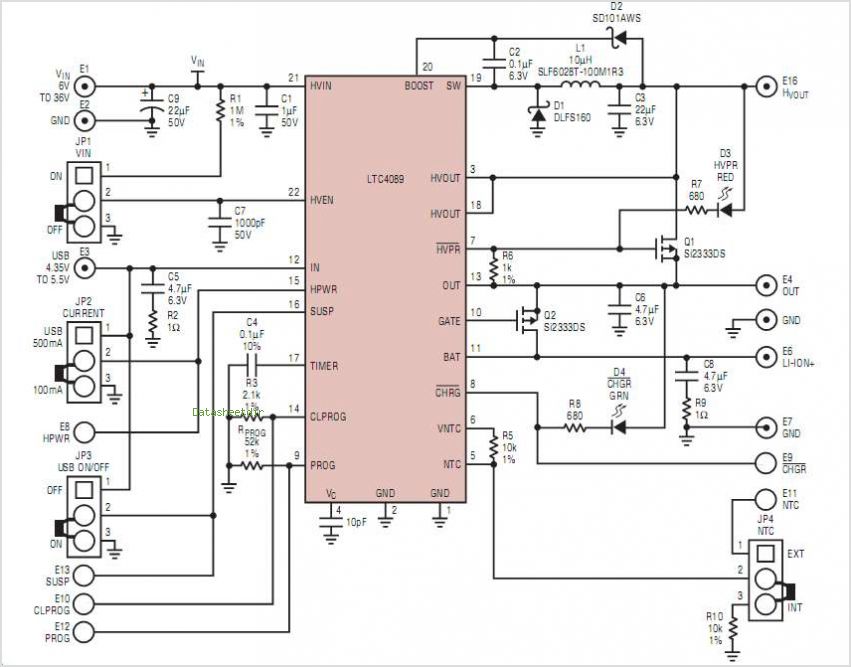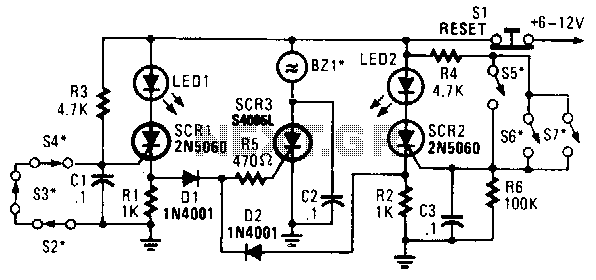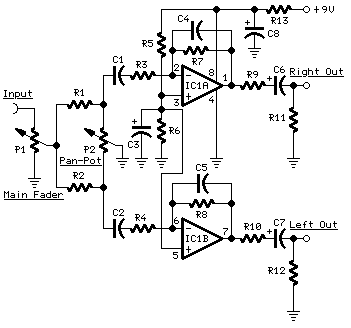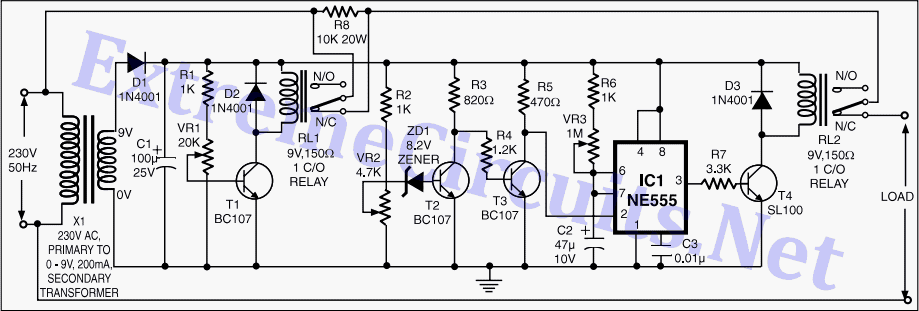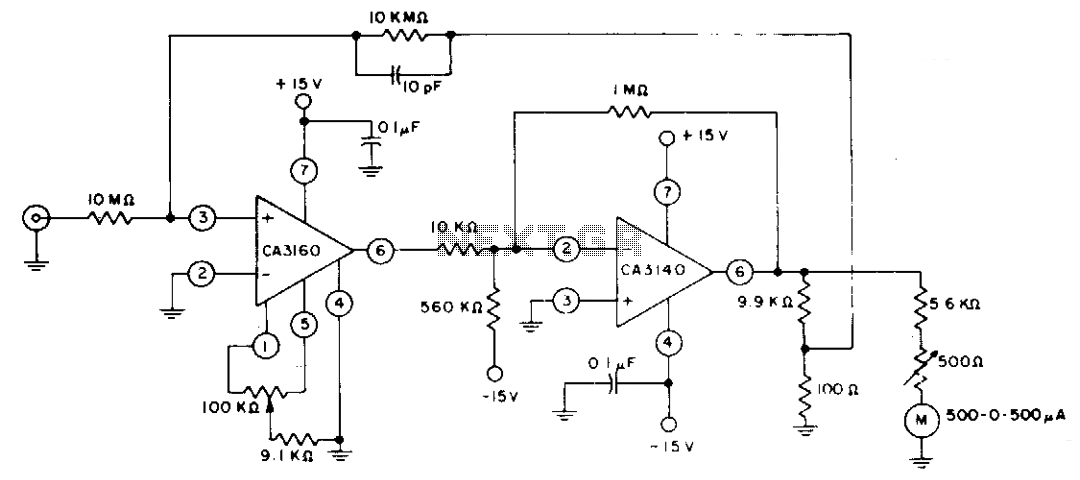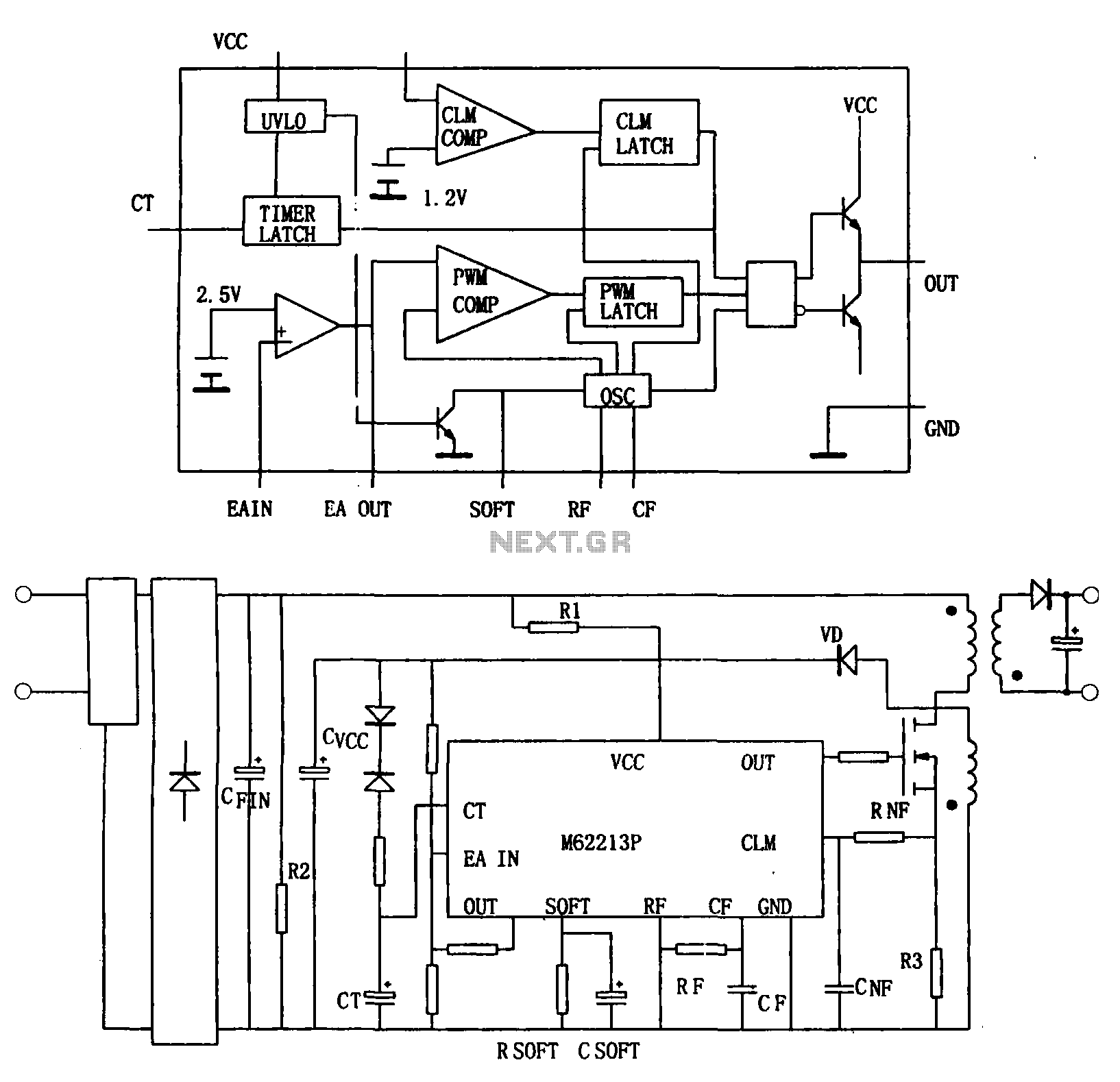
High input comparator

The circuit utilizes both halves of the CA3290 BiMOS dual voltage comparator. The LED will be activated whenever the input signal is above the lower limit (VL) but below the upper limit (Vy).
The circuit design employs the CA3290 BiMOS dual voltage comparator, which is known for its high-speed performance and low power consumption. This component features two independent voltage comparison sections, allowing for versatile applications in signal monitoring and threshold detection.
In this configuration, the first comparator section is set to reference the lower limit voltage (VL), while the second section is set to reference the upper limit voltage (Vy). When the input signal exceeds the lower limit (VL) and remains below the upper limit (Vy), the output of the first comparator becomes high, activating the LED. This provides a visual indication that the input signal is within the specified range.
The circuit can be enhanced by incorporating hysteresis to prevent false triggering due to noise or fluctuations in the input signal. This can be achieved by adding feedback resistors that create a small voltage offset, ensuring that the LED remains lit only when the input signal is firmly within the defined limits.
Power supply considerations for the CA3290 should include a stable voltage source that meets the operating requirements of the comparator. Additionally, appropriate bypass capacitors should be placed close to the power supply pins to filter out noise and provide stable operation.
Overall, this circuit effectively demonstrates the functionality of the CA3290 as a voltage comparator, providing a clear visual indication through the LED when the input signal is within the desired range.The circuit uses both halves of the CA3290 BiMOS dual voltage comparator. The LED will be turned "ON" whenever the input signal is above the lower limit (VL) but below the upper limit (Vy). An easy go.
The circuit design employs the CA3290 BiMOS dual voltage comparator, which is known for its high-speed performance and low power consumption. This component features two independent voltage comparison sections, allowing for versatile applications in signal monitoring and threshold detection.
In this configuration, the first comparator section is set to reference the lower limit voltage (VL), while the second section is set to reference the upper limit voltage (Vy). When the input signal exceeds the lower limit (VL) and remains below the upper limit (Vy), the output of the first comparator becomes high, activating the LED. This provides a visual indication that the input signal is within the specified range.
The circuit can be enhanced by incorporating hysteresis to prevent false triggering due to noise or fluctuations in the input signal. This can be achieved by adding feedback resistors that create a small voltage offset, ensuring that the LED remains lit only when the input signal is firmly within the defined limits.
Power supply considerations for the CA3290 should include a stable voltage source that meets the operating requirements of the comparator. Additionally, appropriate bypass capacitors should be placed close to the power supply pins to filter out noise and provide stable operation.
Overall, this circuit effectively demonstrates the functionality of the CA3290 as a voltage comparator, providing a clear visual indication through the LED when the input signal is within the desired range.The circuit uses both halves of the CA3290 BiMOS dual voltage comparator. The LED will be turned "ON" whenever the input signal is above the lower limit (VL) but below the upper limit (Vy). An easy go.
